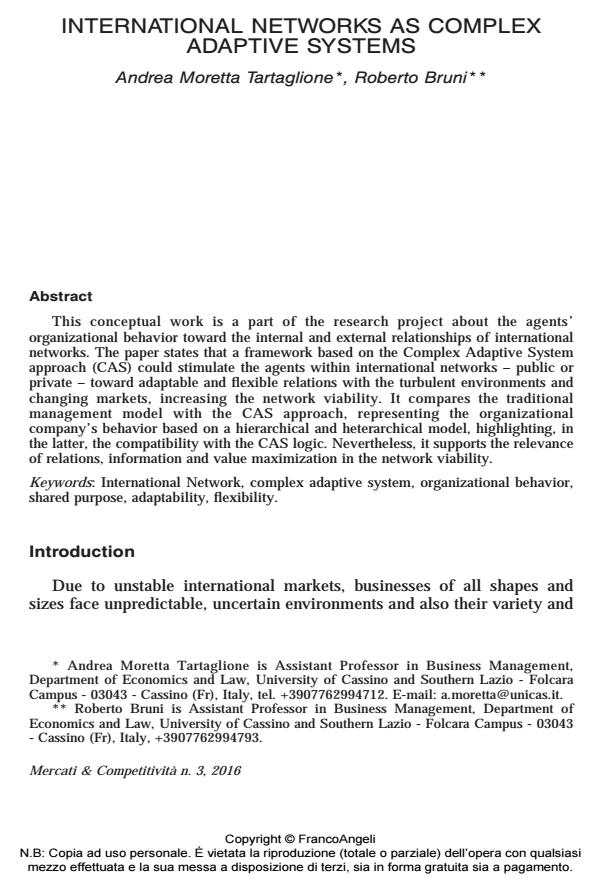International networks as complex adaptive systems
Journal title MERCATI & COMPETITIVITÀ
Author/s Andrea Moretta Tartaglione, Roberto Bruni
Publishing Year 2016 Issue 2016/3
Language English Pages 21 P. 111-131 File size 462 KB
DOI 10.3280/MC2016-003007
DOI is like a bar code for intellectual property: to have more infomation
click here
Below, you can see the article first page
If you want to buy this article in PDF format, you can do it, following the instructions to buy download credits

FrancoAngeli is member of Publishers International Linking Association, Inc (PILA), a not-for-profit association which run the CrossRef service enabling links to and from online scholarly content.
This conceptual work is a part of the research project about the agents’ organizational behavior toward the internal and external relationships of international networks. The paper states that a framework based on the Complex Adaptive System approach (CAS) could stimulate the agents within international networks - public or private - toward adaptable and flexible relations with the turbulent environments and changing markets, increasing the network viability. It compares the traditional management model with the CAS approach, representing the organizational company’s behavior based on a hierarchical and heterarchical model, highlighting, in the latter, the compatibility with the CAS logic. Nevertheless, it supports the relevance of relations, information and value maximization in the network viability.
Keywords: International Network, complex adaptive system, organizational behavior, shared purpose, adaptability, flexibility
Andrea Moretta Tartaglione, Roberto Bruni, International networks as complex adaptive systems in "MERCATI & COMPETITIVITÀ" 3/2016, pp 111-131, DOI: 10.3280/MC2016-003007